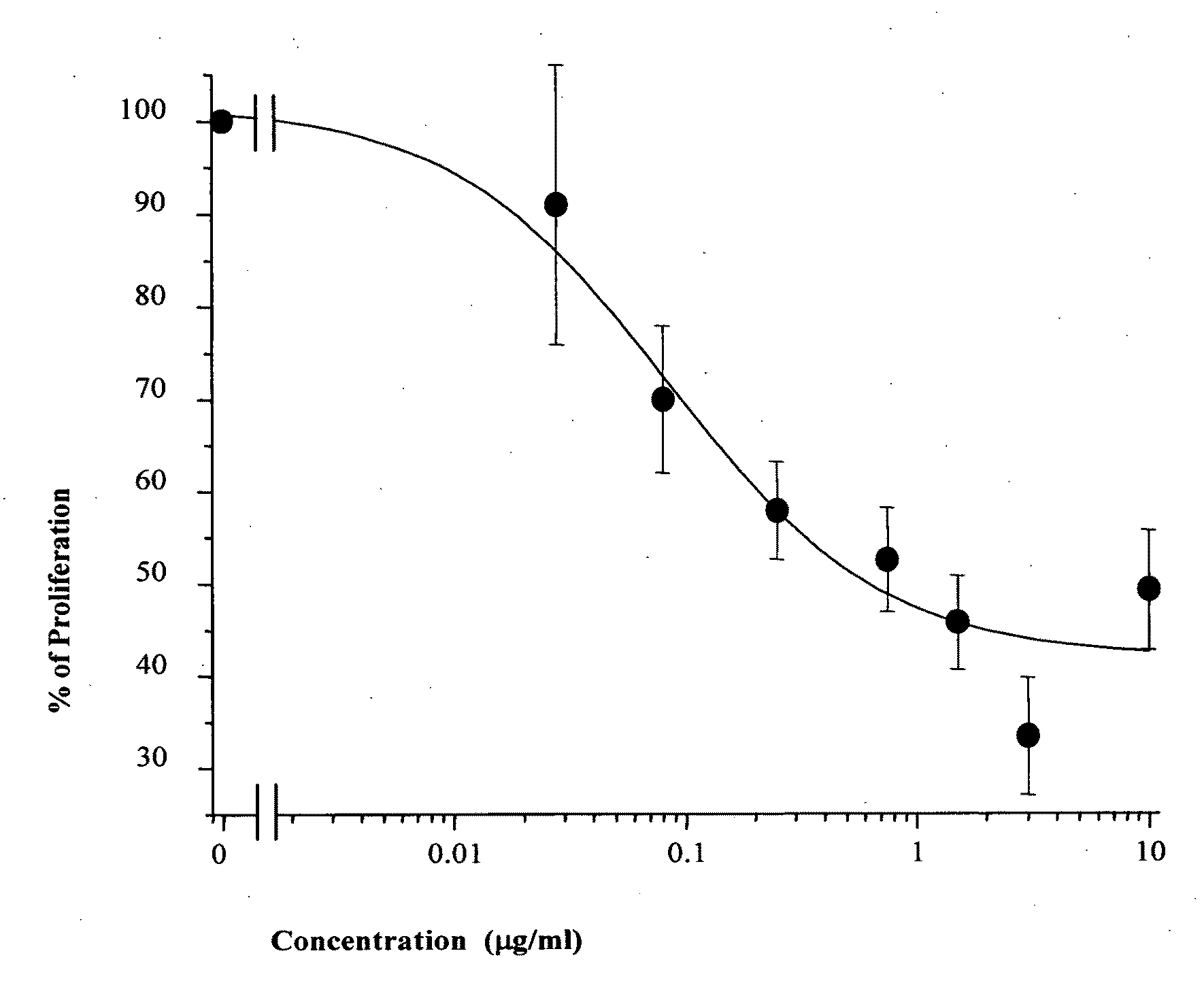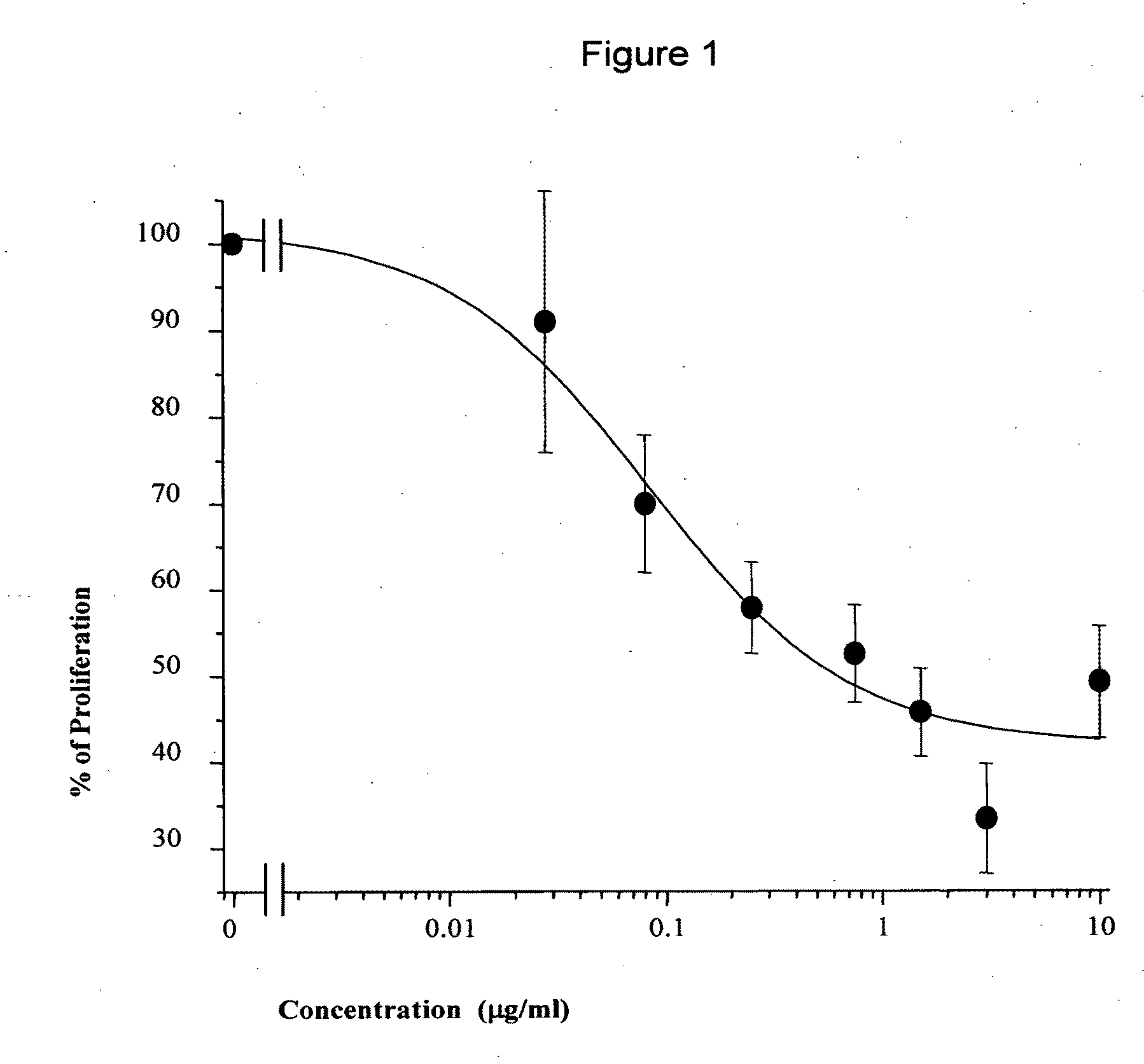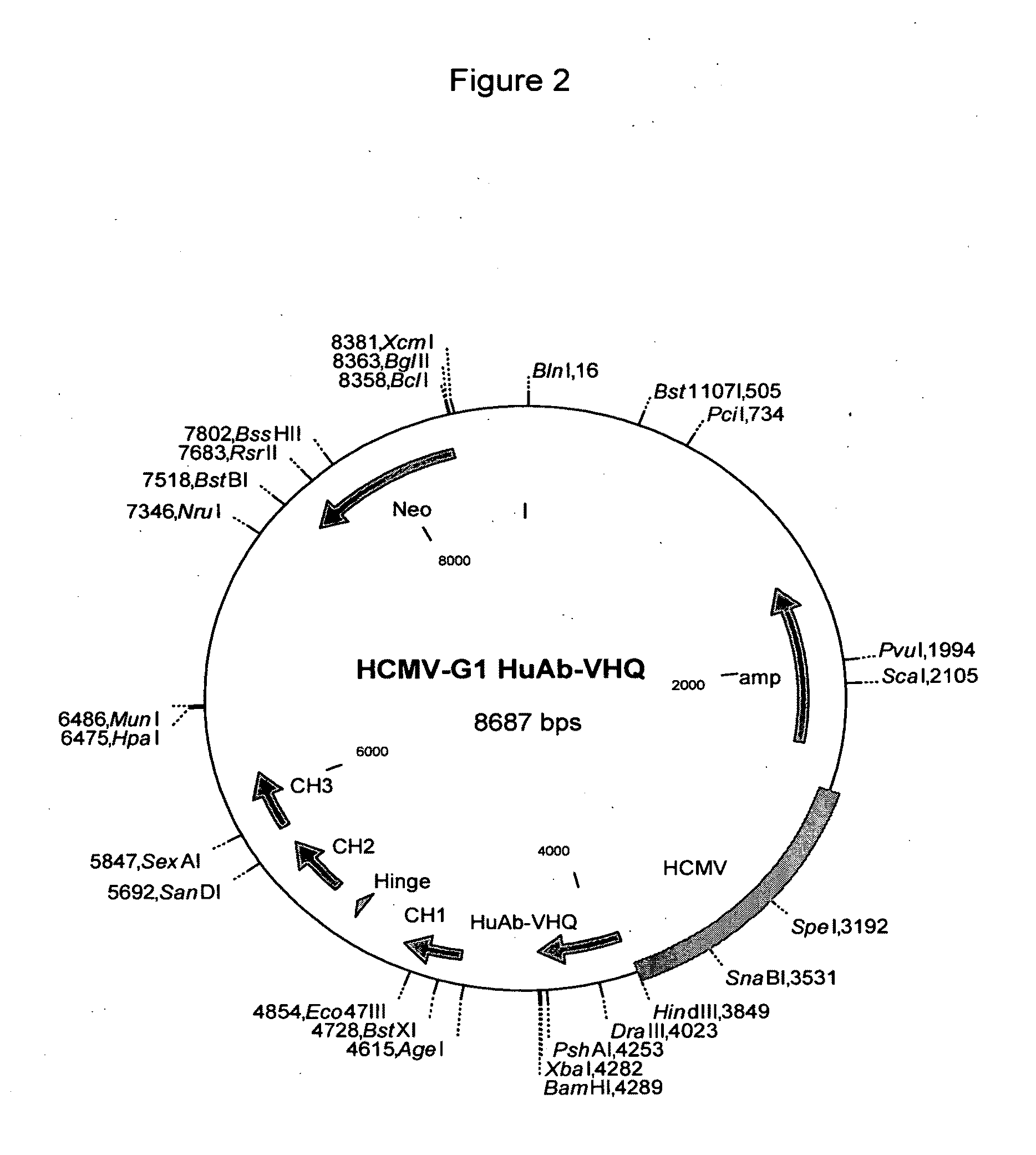Therapeutic Binding Molecules
a technology of binding molecules and therapeutics, applied in the field of organic compounds, can solve the problems of graft rejection and potential hazard for the development of autoimmune diseases
- Summary
- Abstract
- Description
- Claims
- Application Information
AI Technical Summary
Benefits of technology
Problems solved by technology
Method used
Image
Examples
example 1
Primary Mixed Lymphocyte Response (MLR)
Cells
[0104]Blood samples are obtained from healthy human donors. Peripheral blood mononuclear cells (PBMC) are isolated by centrifugation over Ficoll-Hypaque (Pharmacia LKB) from leukocytes from whole peripheral blood, leukopheresis or buffy coats with known blood type, but unknown HLA type. In some MLR experiments, PBMC are directly used as the stimulator cells after the irradiation at 40 Gy. In the other experiments, T cells were depleted from PBMC by using CD2 or CD3 Dynabeads (Dynal, Oslo, Norway). Beads and contaminating cells are removed by magnetic field. T cell-depleted PBMC are used as simulator cells after the irradiation.
[0105]PBMC, CD3+ T cells or CD4+ T cells are used as the responder cells in MLR. Cells are prepared from different donors to stimulator cells. CD3+ T cells are purified by negative selection using anti-CD16 mAb (Zymed, Calif.), goat anti-mouse IgG Dynabeads, anti-CD14 Dynabeads, CD19 Dynabeads. In addition anti-CD8 D...
example 2
Secondary MLR
[0112]In order to assess whether a “candidate mAb” induces unresponsiveness of CD4+ T cells to specific alloantigens, secondary MLR is performed in the absence of any antibodies after the primary MLC. CD4+ T cells are cultured with irradiated allogeneic stimulator cells (T cells-depleted PBMC) in the presence of the indicated antibody in 96-well culture plates for 10 days (primary MLC). Then, cells are collected, layered on a Ficoll-Hypaque gradient to remove dead cells, washed twice with RPMI, and restimulated with the same stimulator, 3rd party stimulator cells or IL-2 (50 U / ml). The cells are cultured for 3 days and the proliferative response is determined by pulsing the cells with 3H-thymidine for the last 16-20 hours of culture.
[0113]Specifically, CD4+ T cells are cultured with irradiated allogeneic stimulator cells (T cells-depleted PBMC taken from other donors) in the presence of 10 μg / ml of the “candidate mAb”, control IgG1 chimeric Ab and F(ab′)2 fragment of go...
example 3
In Vivo Survival Studies in SCID-Mice
[0118]Engraftment of hu-PBL in SCID Mice
[0119]Human peripheral blood mononuclear cells (PBMC) are injected intraperitoneally into SCID mice C.B 17 / GbmsTac-Prkdcscid Lystbg mice (Taconic, Germantown, N.Y.) in an amount sufficient to induce a lethal xenogeneic graft-versus-host disease (xGvHD) in >90% of the mice within 4 weeks after cell transfer. Such treated SCID mice are hereinafter designated as hu-PBL-SCID mice
Mab-Treatment of hu-PBL-SCID Mice
[0120]Hu-PBL-SCID mice are treated with a “candidate mAb” or mouse or chimeric isotype matched mAb controls at day 0, immediately after PBMC injection, at day 3, day 7 and at weekly intervals thereafter. Mabs are delivered subcutaneously in 100 μl PBS at a final concentration of 5 mg / kg body weight. The treatment was stopped when all control mice were dead.
Evaluation of Treatment Results
[0121]The main criterion to assess the efficacy of a “candidate mAb” in this study was the survival of the hu-PBL-SCID ...
PUM
 Login to View More
Login to View More Abstract
Description
Claims
Application Information
 Login to View More
Login to View More - R&D
- Intellectual Property
- Life Sciences
- Materials
- Tech Scout
- Unparalleled Data Quality
- Higher Quality Content
- 60% Fewer Hallucinations
Browse by: Latest US Patents, China's latest patents, Technical Efficacy Thesaurus, Application Domain, Technology Topic, Popular Technical Reports.
© 2025 PatSnap. All rights reserved.Legal|Privacy policy|Modern Slavery Act Transparency Statement|Sitemap|About US| Contact US: help@patsnap.com



